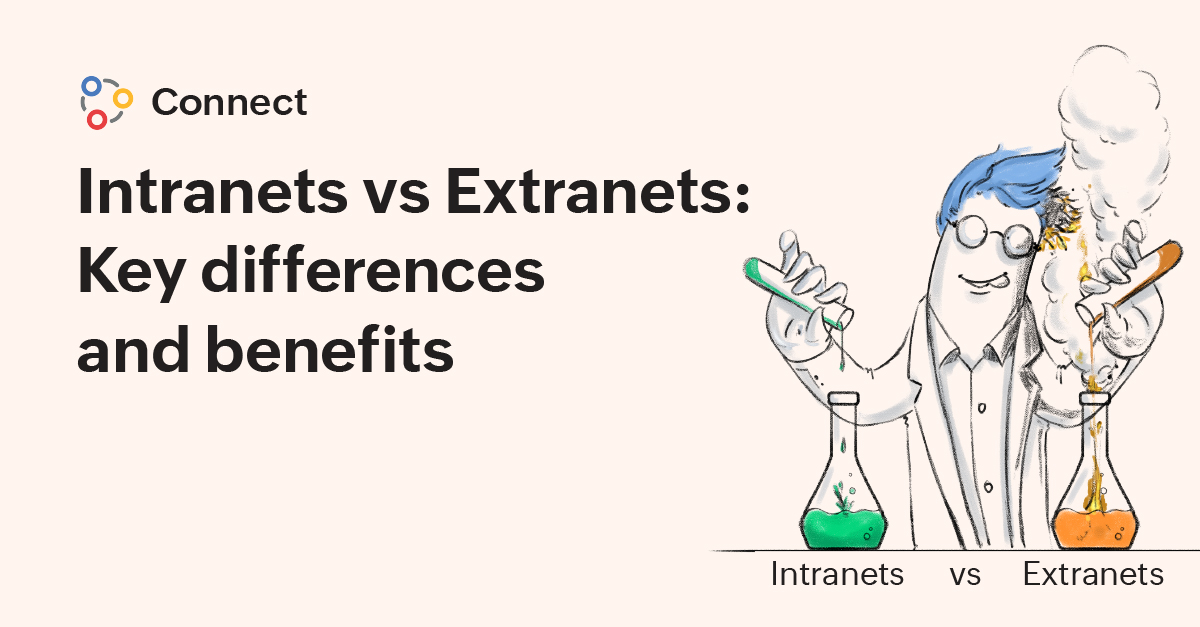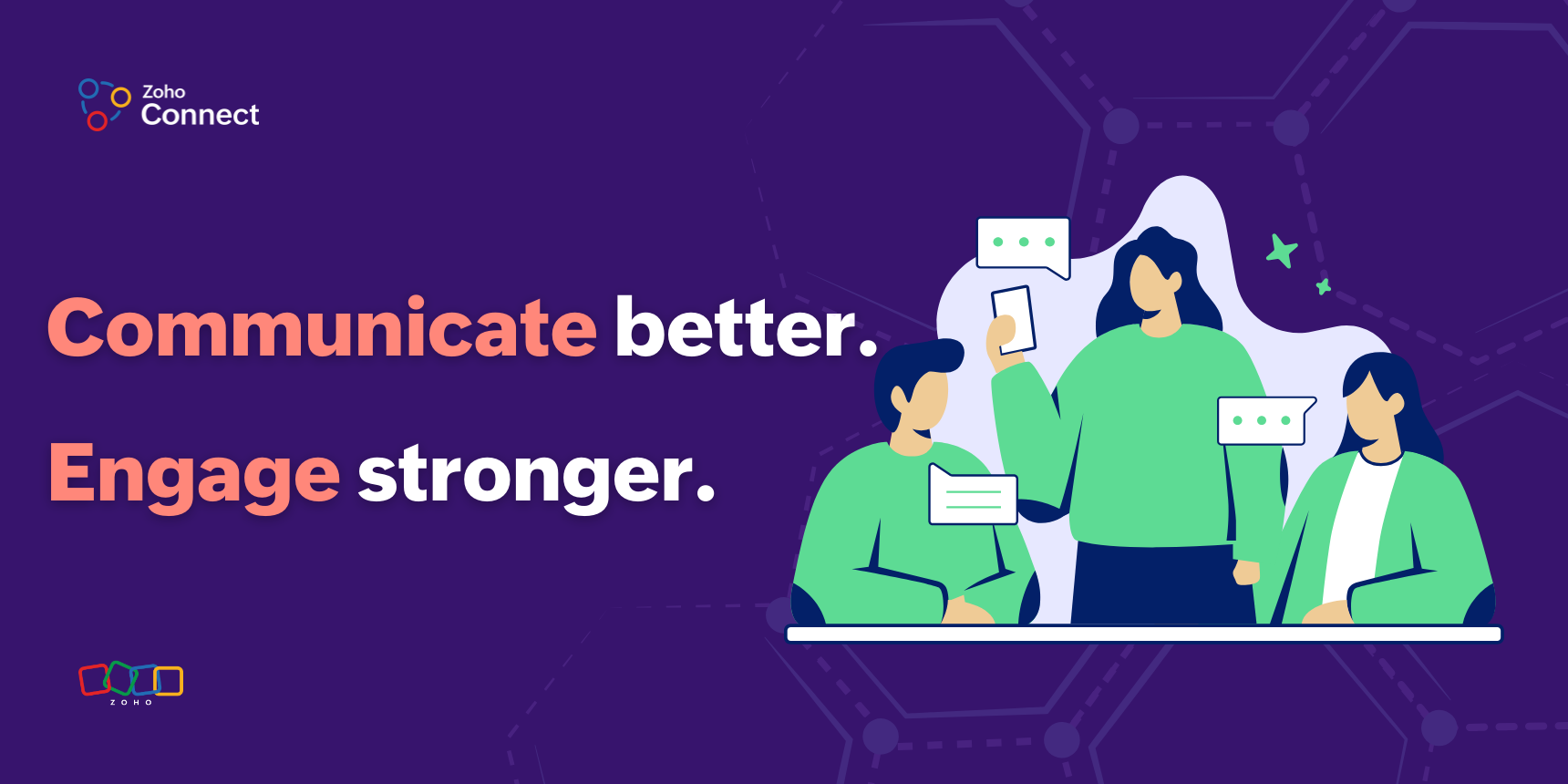- HOME
- Internal Communications
- How are intranets and extranets different from each other?
How are intranets and extranets different from each other?
- Last Updated : October 24, 2023
- 1.5K Views
- 5 Min Read

The importance of communication cannot be emphasized enough for any business that's looking to be successful. Communication typically involves both the exchanges between all members of an organization, and the correspondence between the organization and all of its external stakeholders (customers, partners, vendors, etc.)
Any breakdown in communication—either internally or externally—impacts the business unfavorably. For this reason, we have tools in place to ensure that barriers to communication are removed and, also, to organize communication channels, so everyone knows where, how, and when things need to be said.
This is where intranets and extranets come into the picture. They don't just enhance the flow of information and messages, they also make sure that everything is placed in context.
To understand how intranets and extranets differ from each other, let's first take a look at what they are.
What is an intranet?
The intranet is often described as a private network that can only be accessed by an organization's employees or staff. Traditional intranets existed before we could move everything to the cloud. They were usually a single page of information that was shared with all employees, and in their later incarnations included file sharing and messaging.
Modern intranets have evolved to do so much more. They're at the forefront of internal communications and employee engagement and are accessible on the cloud.
Considering all this, a more relevant definition of intranet would be a cloud-based or installable platform that brings all employees together, connects them with the tools and information they need, and facilitates internal communication and collaboration while keeping them engaged and aligned with the company's culture and vision.
Why do you need an intranet?
As companies grow, simply communicating over email or chat won't suffice. In modern times, employee engagement and employee well-being have taken center stage. Today's employees are not inclined toward staying in organizations that don't align with their values or in places that make them feel disengaged with work, and rightfully so.
Therefore, the onus falls on the company to be clear about what they stand for and to ensure that their employees are satisfied at work. Failure to do so may negatively impact their brand, and as a result, their business. As you might have learned, this is especially tricky to achieve during this age of remote and hybrid work.
This is where modern intranets help. They're people-oriented apps that help bridge gaps in communication and resources between the management and employees. While doing so, they also put the focus on building mutual trust.
What can intranets do for you?
Provide a common space where all employees and members of management are part of and can interact with each other.
Encourage multi-directional communication within the organization.
Act as a recognition center for all members and a platform for employee engagement, particularly to connect hybrid and remote workers.
Operate as a one-stop for all company announcements, resources, and events.
Facilitate learning and knowledge sharing within the organization.
Tap into your company's collective potential by allowing idea-sharing across hierarchies.
Enable transparency and build trust across the organization.
What is an extranet?
An extranet, on the other hand, is typically a web-based platform that provides stakeholders outside of a company—such as partners, vendors, or suppliers—access to information that is generally only available to employees. In other words, an extranet is a space to interact securely and share information with members outside of the company.
Extranets in their traditional form are less common these days. Just like intranets, they have evolved beyond their primary functions. Today's extranets can double up as a way to collaborate with external stakeholders or a community to bring those outside of your company together.
A redefinition of an extranet could be a cloud-based, secure community platform that helps you communicate, share documents, information, and collaborate with outside stakeholders like your partners, vendors, suppliers—or even customers.
Why do you need an extranet?
Businesses have gone global. Any organization, regardless of its size, works with multiple stakeholders—besides employees—from various locations. For the business to succeed, all of these people need to come together and work towards a common vision.
This is where extranets help. They act as a community platform that enables everyone to be on the same page and work together, be it projects, events, or any other business operation. Today's extranets are flexible in the way they work. They could be a partner network, or a customer community, or a way to manage your suppliers/vendors. This makes them an integral part of your business communication tool belt.
What can extranets do for you?
Bring all the right people together—be it your partners, agencies you work with, or customers.
Allow you to be flexible; you can decide how an extranet needs to be used based on the people who will be part of it.
Save a lot of time by creating an interactive environment on the cloud.
Reduce silos by connecting your third-party collaborators with the files, resources, and tools they need.
Build a customer community that can be used to improve your retention, and build trust and loyalty.
Gain feedback, insights, and perspectives on your business.
Help you strengthen your corporate relations with customers and third-party collaborators.
Key differences between an intranet and an extranet
Now that we've defined what intranets and extranets are, let's look at some of the main differences between the two.
Intranet | Extranet |
It's exclusive to employees of the company. | While employees can be a part of an extranet, an extranet is a space for your company's third-party collaborators. |
It's owned and managed by a single organization. | It can be owned and managed by multiple groups of people. |
Helps your organization streamline internal communication. | Enables your organization to establish healthy working relations with partners, vendors, suppliers, or agents. |
All employees have secure access to an intranet by using their company email addresses. | Secure access is given to third-party collaborators. The admin/owner of the extranet can decide who should be a part of it. |
Acts as an engagement tool for employees. | Enables a community-like digital space for customers. |
Because all members belong to a single organization, an intranet can be set up to sync employees from your directory regularly. | Members are generally invited to the community space. Because members belong to different organizations, there is no common directory from which they can be synced. |
Modern intranets perform a wide variety of functions, including acting as an internal knowledge base, a task management tool, and a document repository. | They have evolved to be a community space that helps to create and improve an organization's brand image, particularly if they're a customer portal. |
They can help improve employee retention by establishing a healthy culture and improving employee experiences. | They can boost third-party relations by helping companies collaborate closely with all of their stakeholders. |
How can you leverage them both?
Although there are a few differentiators, intranets and extranets are very similar in the way they operate and the problems they solve. Both improve communications, facilitate collaboration, increase engagement, and create positive experiences for those involved, from employees to partners, vendors, and customers.
In today's world of hybrid work and business operations being global, connecting people in a simple, yet efficient, way makes a huge difference. To make things easier, products such as Zoho Connect offer both employee intranet and a community platform that's flexible and scalable to suit your business needs.


